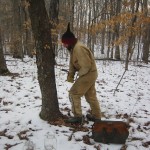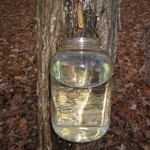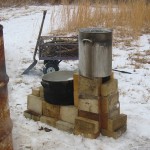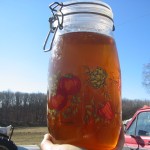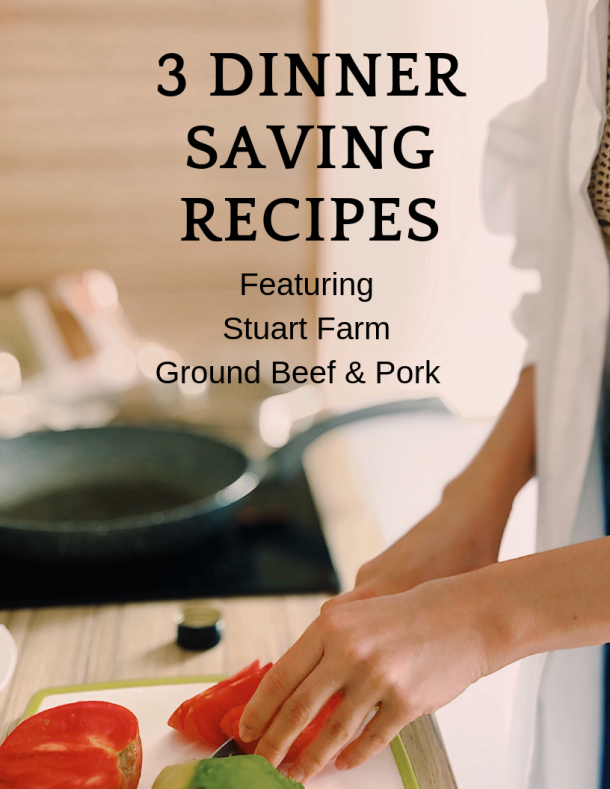Like a lot of what we do here on the farm, making our own maple syrup is a labor of love. That is not an understatement. Sugaring, as it is called, is a lot of work and time. Collecting the sap, sometimes twice a day, and carrying it through the woods is hard. Boiling it down can take 2 days and I must tend to the fire and sap every half hour. Thankfully, tapping is done during a time when there isn’t a lot of pressing tasks to be done around the farm. And since I am the one who has to brave the grocery stores, I like to come up with lots of ideas of what we can make ourselves and reasons we don’t need to buy them. Most of those ideas you can read about in other posts. So when we found lots of Sugar Maples on the farm, it seemed only fitting to start making our own syrup. And I won’t lie, I love some homemade waffles. And using our own syrup just made me love them more. My first winter here was perfect for making maple syrup. We had lots of snow, so keeping the sap cold was easy…pack it in snow. Not all years are so easy. This is our second time making syrup, but we have a new fridge to keep the sap cold until boiling. Our first year we tapped 5 trees and collected enough sap to make about 1 gallon of syrup. This year, we tapped 18 trees and are hoping for a good harvest.
Sugar maples have the highest sugar content of the maples. You can tap other maples, but you will have to collect a lot more sap. To tap a tree, it must be at least 10 inches in diameter (31 inches circumference). This ensures the tree can not only produce a good flow, but also can recover from tapping. A tap is 7/16 inches diameter and about 2 inches deep. That is a lot of damage to repair and if the tree is not old enough or healthy enough, it can do unrepairable damage. To get a good flow, the day time temp must be over 40 F and sunny and drop to or below freezing at night. Most trees can give up to half a gallon of sap a day. To make one gallon of syrup, you will have to collect 40 gallons of sap.
Last summer I tagged all the sugar maples that looked big enough to tap. That made locating the trees this winter much easier. I collected all the tools I would need…a brace (manual hand drill) and auger bits, a sharp saw, the spouts, the jars, a hammer, and a measuring tape. I went through the woods measuring the trees. Ones that were big enough were left tagged, the ones that were too small were re-tagged on the branches. I had made our spouts again this year from our bamboo. I cut a piece between the nodes and cleaned them out. They work very well. I drilled the holes at a slight angle pointed up to help the sap flow. Once the hole is cleaned out, the spout is tapped in just far enough to hold it into place and hold the weight of the jar. A small notch is cut out to hold the wire that holds the jar. Then I wait.
My first full day I collected approximately 8 gallons of sap. Later in the week, I collected less than a gallon. Watching the temperatures is crucial to making sure I collect often enough. One night it was just bellowing freezing and the day time temp was in the 50s–optimal conditions and I collected almost 15 gallons. I waited to long to do my first collecting and some of the 2 quart jars were overflowing. I came back 3 hours later and they were almost full again. I wait until I have at least 20 gallons to boil. That will give me half a gallon of syrup. We have an outside stove set up to boil. Cooking off approximately 19.5 gallons of water is too much condensation to do inside. The wood stove maintains a pretty even temp as long as we keep an eye on it. The first 6 hours are pretty boring. Once you get to about 2 or 3 gallons, you need to keep a good watch on it to make sure it doesn’t boil down too fast. Once it gets to 219F, it is at the optimal sugar content and is canned.
As the month progresses, the resulting syrup should change from a grade A light amber, to a grade A dark amber, to Grade B. The light amber has more of a caramel taste to it. The dark amber is more like what you would get at the store. The grade B is better for cooking since it has a stronger taste, more like a molasses. Our first year, we got what Fred called “black platinum”…a dark amber with a strong maple flavor. This year produced only light amber. And 2 batches were tainted by our new fridge smell and gave the syrup an off taste.
Even though you can find 100% maple syrup in the store, and I don’t mean the Log Cabin type, it isn’t quite the same as what we make. I am not sure why. Ours is not as thick as the store bought syrup. While family and friends like ours, they have become used to the thicker consistency of store bought. Our 2 gallons from this year will last us quite some time. It will go in oatmeal, cereal, baking, tea, coffee, yogurt, and ice cream topping.
